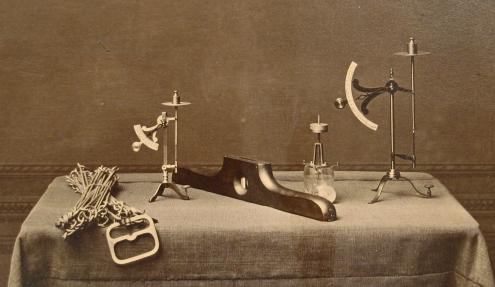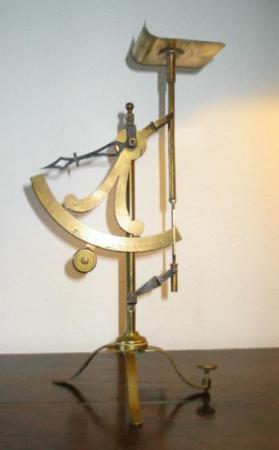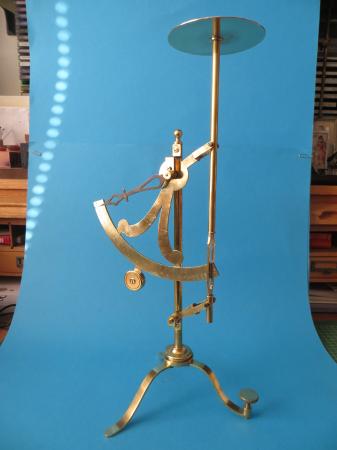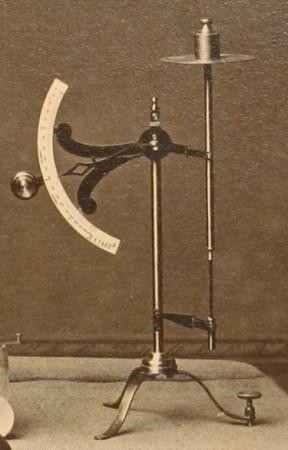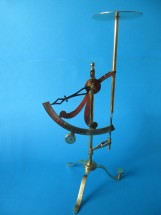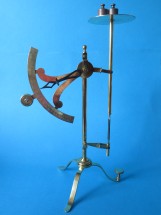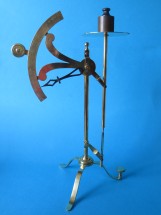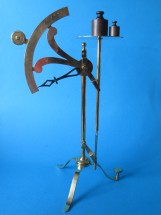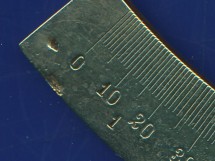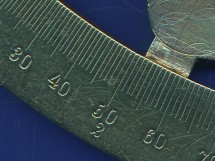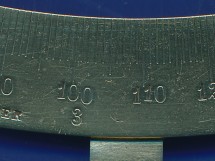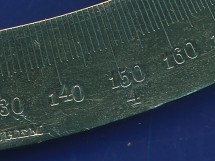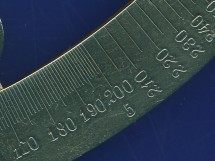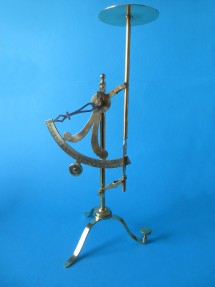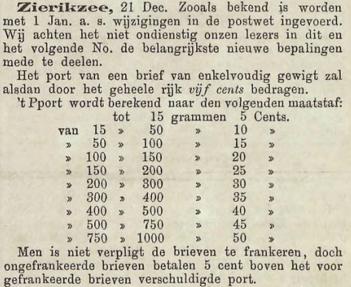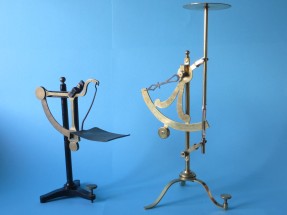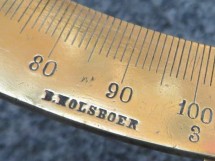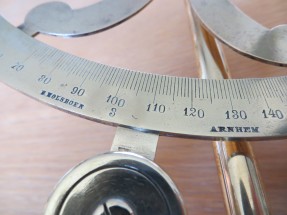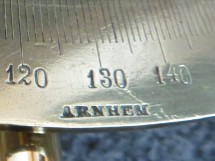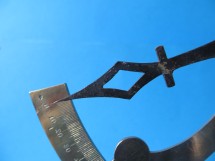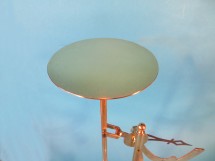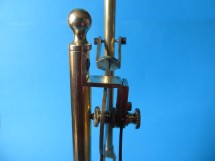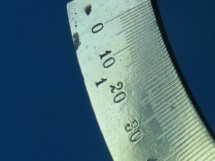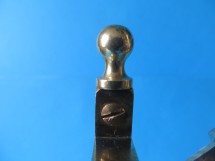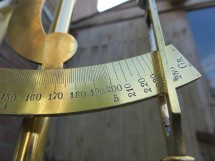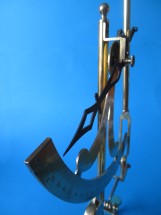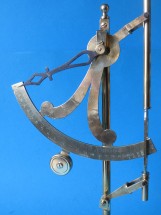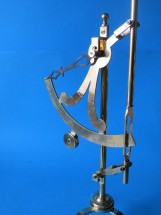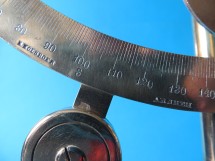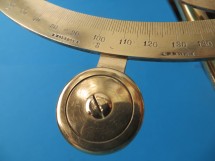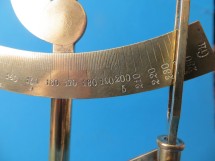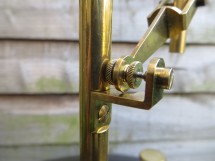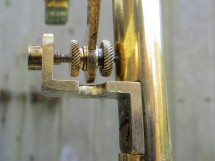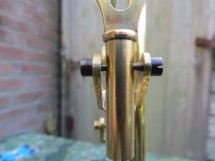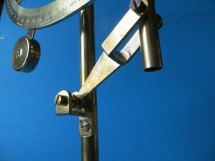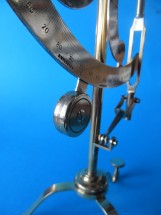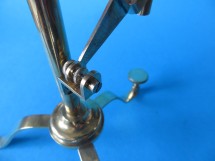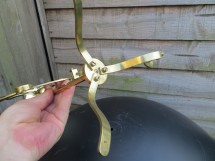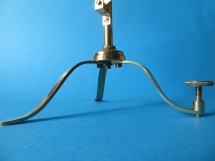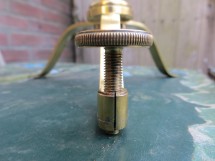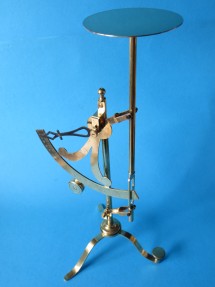
Berend Holsboer letter scale
I bought this letter scale once made by Berend Holsboer from Arnhem, Netherlands on an internet auction. The letter scale had a rather strange top plate, with one side folded up, see the picture below. This was done to avoid hitting the central stand while weighing. That top plate is clearly not original and the length of the vertical tube part under the top plate is simply too short. The connection of the top plate to the tube was crudely constructed and ugly. There was also an ugly abundant solder connection of the tube and the part with the opening in which at rest the scale comes in between.
The question was how this letter scale must have originally looked like? Thanks to Ritzo Holtman, editor of the journal Meten & Wegen of the Dutch Society GMVV, and his Literature section at the website of the GMVV, and then with help of the Association De Hollandse Cirkel, and of Mr Leen Aardoom, and then of Mr Hendrik Holsboer, a great-grandson of Berend Holsboer, this became obvious. On one of the photos in the album "B. Holsboer, Werktuigkundige, Arnhem" is a table with among others, two postal scales, see the picture below. The letter scale shown on the right is clearly the letter scale that I bought! Through measuring it became clear how long the replacement tube had to be. I also replaced the lower short tube due to the rather large play at the pivots. Mr Hendrik Holsboer was so kind to send me his handmade construction drawing of the top plate made by carefully measuring a similar plate of another letter scale owned by him. The letter scale is completely disassembled, cleaned and polished. Both tube parts are replaced. With the jigsaw I cut a new letter tray out of brass plate and then perfected the circular form with file and a lot of patience. I soldered a small cylindrical rod on the bottom of the new plate, and now this connects the top plate to the tube section. The large part of
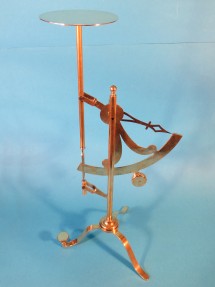
back of the letter scale
